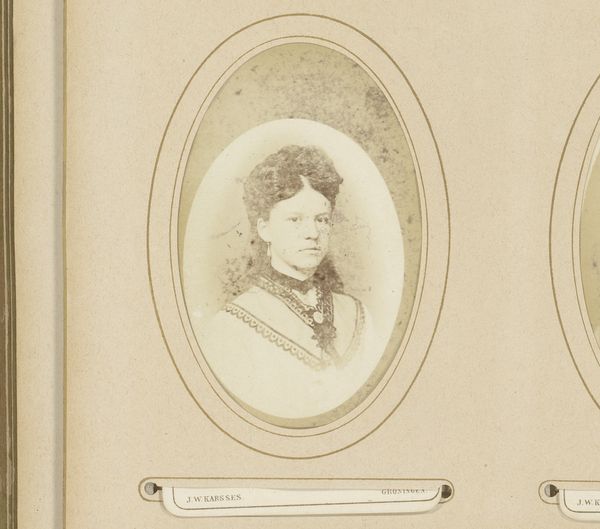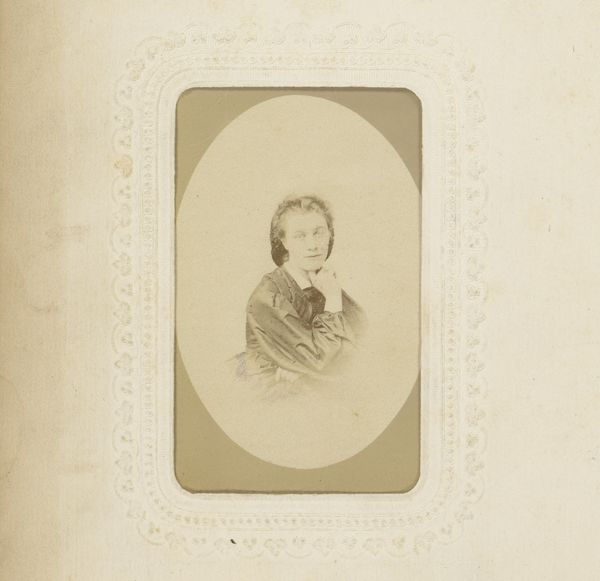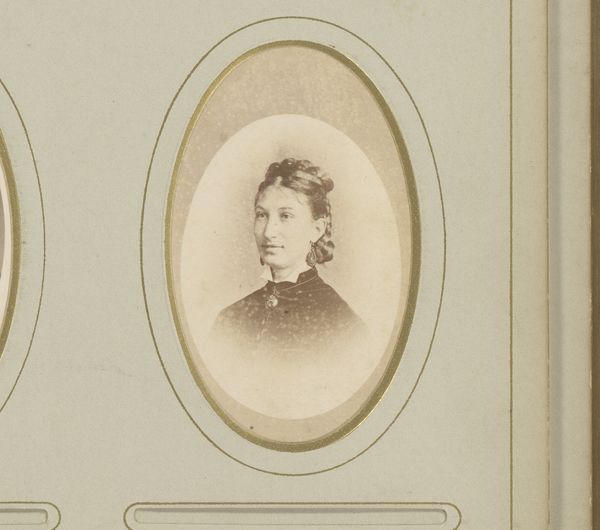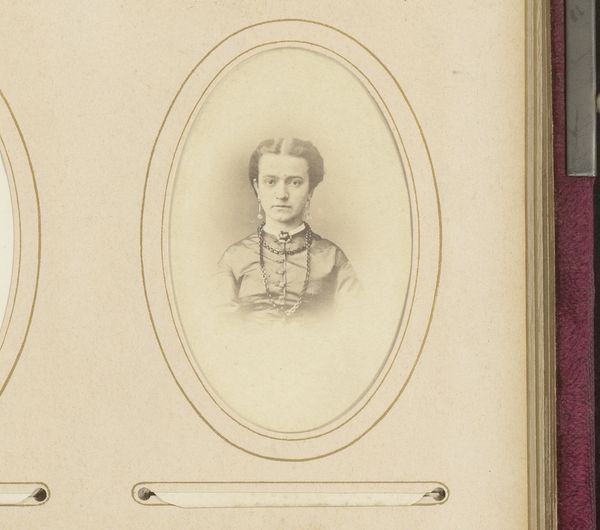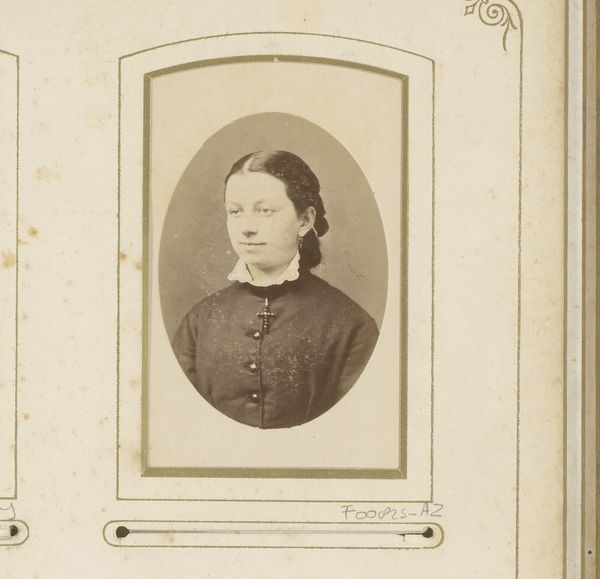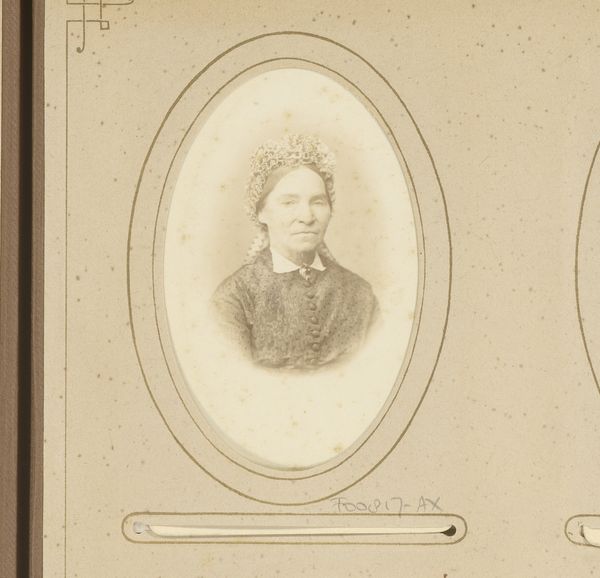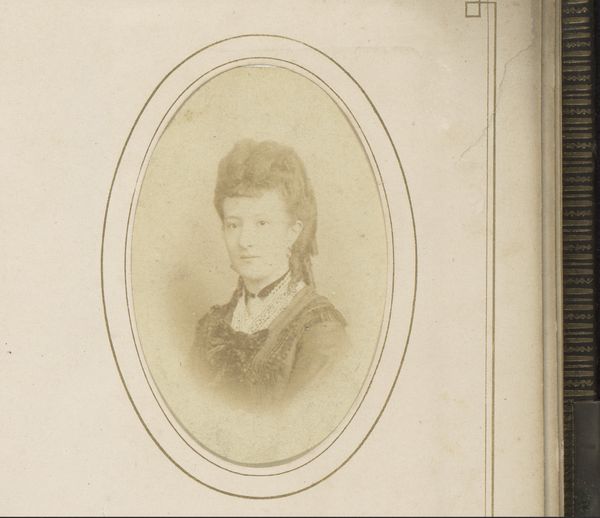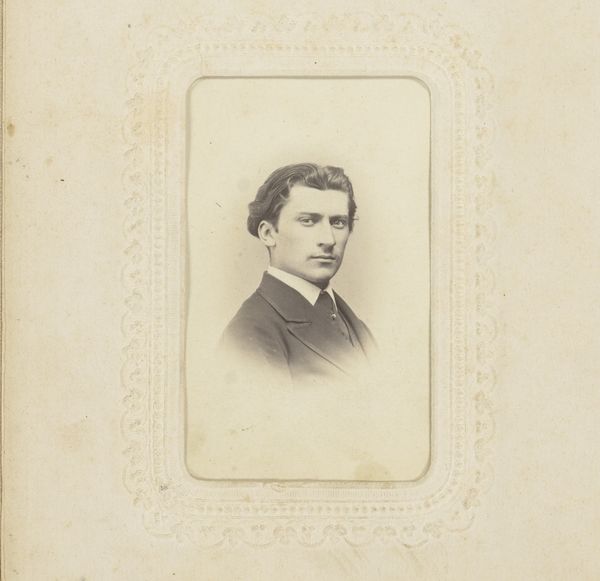
photography
#
portrait
#
photography
#
realism
Dimensions: height 81 mm, width 49 mm
Copyright: Rijks Museum: Open Domain
Editor: So, here we have a photographic portrait called "Portret van een vrouw met muts", placing it somewhere between 1862 and 1900. The photographers were Wegner & Mottu, and it’s currently held in the Rijksmuseum. It feels like a very constrained image; there’s a certain stiffness about the pose and expression. What strikes you when you look at it? Curator: What jumps out to me is the duality in how she presents herself. On one hand, we have the stern, almost severe expression and formal attire – symbols of social respectability and perhaps inner stoicism, a preservation of dignity. On the other, she adorns her head with what appear to be flowers. What do flowers signify? And why this particular choice of headwear? Editor: Perhaps to soften the image a little? The contrast does seem intentional. Is it maybe about balancing personal identity and social expectations? Curator: Precisely. In Victorian photography, clothing and adornment weren’t just about aesthetics; they were coded messages. The flower-adorned bonnet could speak to an aspiration, a whisper of beauty against a backdrop of social constraint, or even remembrance through a funeral bonnet with flowers, and she presents that symbolism as much for herself, and perhaps even God. Do you get a sense that this is performative presentation, or more deeply embedded? Editor: I think it's fascinating how much information and intent could be packed into a single portrait like this. Looking closer at the background versus the subject it highlights just how powerful a well-taken portrait is! Curator: Indeed. It speaks volumes about identity, memory, and the stories we choose to tell, and those that were simply and necessarily present at the time. There's so much contained in this deceptively simple image that we often are not prepared to recognize at face value, however!
Comments
No comments
Be the first to comment and join the conversation on the ultimate creative platform.
